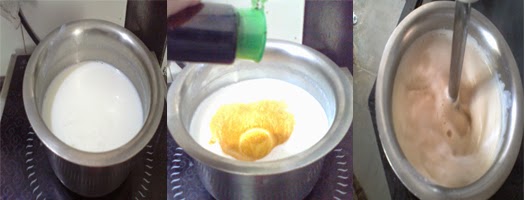
Brewing Perfection: Your Guide to Making Espresso Coffee at Home
The aroma. The crema. The rich, concentrated flavor. Espresso, the lifeblood of coffee culture, has long been the domain of cafes and skilled baristas. But the dream of crafting the perfect espresso, that intense shot of pure coffee bliss, is no longer out of reach. With the right equipment, a little knowledge, and a touch of patience, you can master the art of making espresso coffee at home. This guide will walk you through every step, from selecting the right beans to pulling that perfect shot, empowering you to elevate your home coffee experience.
Making espresso coffee at home isn’t just about convenience; it’s about control. You dictate the quality of the beans, the freshness of the grind, and the precision of the brewing process. This level of control translates directly into a superior cup, tailored to your exact preferences. Forget the long lines and the inflated prices – your journey to espresso mastery starts now.
Understanding the Espresso Fundamentals
Before diving into the practical steps, it’s crucial to understand the core principles of espresso. Espresso is essentially coffee brewed under pressure. Hot water is forced through finely-ground coffee beans, extracting a concentrated, flavorful liquid. This pressure, typically around nine bars (approximately 130 psi), is what creates the signature crema – the rich, golden-brown foam that sits atop a well-made espresso.
The key elements that influence espresso quality include:
- Coffee Beans: The foundation of any great espresso. Freshly roasted, high-quality beans are essential. Look for beans specifically roasted for espresso, as they typically have a darker roast profile and a higher oil content.
- Grind Size: Critical for proper extraction. The grind size must be fine enough to create resistance and allow the pressure to build, but not so fine that it chokes the machine.
- Water Temperature: Optimal water temperature is typically between 195-205°F (90-96°C). This temperature is crucial for extracting the desirable flavors from the coffee grounds.
- Pressure: The driving force behind espresso extraction. Consistent pressure is vital for a balanced extraction and a flavorful shot.
- Extraction Time: The duration of the brewing process. A standard espresso shot typically takes 25-30 seconds to extract.
Essential Equipment for Making Espresso Coffee at Home
While you don’t need to break the bank, investing in the right equipment is paramount for making espresso coffee at home. Here’s a breakdown of the essentials:
The Espresso Machine
This is the heart of your espresso setup. Espresso machines range in price and complexity, from entry-level machines to professional-grade equipment. Consider your budget and desired level of control when choosing a machine.
- Manual Lever Machines: Offer the most control, allowing you to manually control pressure and extraction. These machines require skill and practice.
- Semi-Automatic Machines: You control the grind and tamp, and the machine handles the water heating and pressure. These are a good balance of control and convenience.
- Automatic Machines: These machines automate the brewing process, making them easier to use, but you have less control over the variables.
- Super-Automatic Machines: Grind, tamp, and brew with the touch of a button. These are the most convenient but offer the least control.
The Grinder
A quality grinder is just as important as the espresso machine. A burr grinder is essential for producing a consistent grind size, which is crucial for proper extraction. Avoid blade grinders, as they produce inconsistent results.
- Burr Grinders: Offer the most consistent grind. Choose a grinder with adjustable grind settings to fine-tune the grind for your beans and machine.
- Manual Grinders: A more affordable option, but require manual grinding, which can be time-consuming.
Other Essentials
- Tamper: Used to compress the coffee grounds in the portafilter. A tamper of the correct size is essential for a consistent tamp.
- Portafilter: The handle that holds the coffee grounds during brewing.
- Tamping Mat: Protects your countertop and provides a stable surface for tamping.
- Scale: For measuring coffee grounds and brewed espresso, ensuring consistency.
- Knock Box: For disposing of used coffee grounds.
- Water Filter: Protects your machine from mineral buildup and improves the taste of your espresso.
Choosing the Right Coffee Beans for Espresso
The coffee beans you choose will significantly impact the final flavor of your espresso. Here’s what to look for:
- Freshness: Always use freshly roasted beans. Look for a roast date on the bag. Coffee beans are at their peak flavor a few weeks after roasting.
- Roast Level: Darker roasts are typically preferred for espresso, as they have a bolder flavor and a higher oil content. However, some people prefer medium roasts.
- Origin: Experiment with different origins to find your preferred flavor profile. Consider beans from Latin America, Africa, and Asia.
- Blend vs. Single Origin: Blends offer a more balanced flavor profile, while single-origin coffees showcase the unique characteristics of a specific region.
When purchasing beans, consider buying from a local roaster. They can offer fresh, high-quality beans and provide advice on selecting the best beans for making espresso coffee at home.
The Step-by-Step Guide to Making Espresso
Now, let’s get to the exciting part: brewing your espresso. Follow these steps for a consistently delicious shot:
- Preheat Your Machine: Turn on your espresso machine and allow it to preheat according to the manufacturer’s instructions. This is crucial for maintaining consistent water temperature.
- Grind Your Beans: Grind your coffee beans to a fine, espresso-specific grind size. The grind size will affect the extraction time. Start with the recommended grind for your machine and adjust as needed.
- Dose and Distribute: Weigh your ground coffee and dose it into the portafilter basket. Use a distribution tool to evenly distribute the grounds in the basket.
- Tamp the Grounds: Use a tamper to compress the coffee grounds firmly and evenly. Apply consistent pressure, typically around 30 pounds (13.6 kg). The tamp should be level and smooth.
- Purge the Group Head: Run a short burst of water through the group head to preheat it and remove any residual coffee grounds.
- Insert the Portafilter: Lock the portafilter into the group head.
- Start the Extraction: Initiate the extraction process. Observe the espresso flowing from the portafilter spouts. Aim for a 25-30 second extraction time for a double shot.
- Observe the Crema: A good crema is a sign of a well-extracted espresso. It should be thick, golden-brown, and persistent.
- Enjoy: Sip your freshly brewed espresso. You can drink it as is, or use it as a base for other coffee drinks like lattes, cappuccinos, or macchiatos.
Troubleshooting Common Espresso Problems
Even with the best equipment and technique, you may encounter some challenges when making espresso coffee at home. Here are some common problems and how to address them:
- Sour Espresso: Indicates under-extraction. The grind may be too coarse, the water temperature may be too low, or the extraction time may be too short. Try grinding finer, increasing the water temperature, or extending the extraction time.
- Bitter Espresso: Indicates over-extraction. The grind may be too fine, the water temperature may be too high, or the extraction time may be too long. Try grinding coarser, decreasing the water temperature, or shortening the extraction time.
- Weak Espresso: Insufficient coffee grounds, too coarse a grind, or the extraction time is too short. Increase the dose, grind finer, or extend the extraction time.
- Channeling: Water finding paths of least resistance through the coffee grounds, leading to uneven extraction. Ensure the grounds are evenly distributed and tamped properly.
- No Crema: The beans may be stale, the grind may be too coarse, or the machine may not be reaching the correct pressure. Use fresh beans, grind finer, and ensure your machine is functioning correctly.
Advanced Techniques for Espresso Mastery
Once you’ve mastered the basics of making espresso coffee at home, you can explore advanced techniques to refine your skills:
- WDT (Weiss Distribution Technique): Use a needle tool to break up clumps in the coffee grounds and distribute them evenly before tamping.
- Pre-Infusion: Gradually wet the coffee grounds before full extraction to improve flavor and consistency.
- Ristretto vs. Lungo: Experiment with extraction times to create different flavor profiles. A ristretto is a shorter extraction, resulting in a more concentrated and sweeter shot. A lungo is a longer extraction, resulting in a more bitter shot.
- Dialing In: The process of adjusting grind size, dose, and extraction time to achieve the perfect espresso. This is an ongoing process that requires experimentation and observation.
Refining your technique takes practice. Don’t be discouraged by initial challenges. Each shot is a learning opportunity.
Cleaning and Maintenance for Your Espresso Machine
Regular cleaning and maintenance are essential for keeping your espresso machine in top condition and ensuring the best possible flavor. Here’s a basic maintenance schedule:
- Daily: Backflush the machine with water to remove coffee oils. Clean the portafilter, basket, and group head.
- Weekly: Backflush the machine with a cleaning solution designed for espresso machines. Clean the steam wand.
- Monthly: Descale the machine to remove mineral buildup.
- Regularly: Replace the water filter.
Consult your machine’s manual for specific cleaning instructions.
Elevate Your Coffee Experience
Making espresso coffee at home is a rewarding journey. It’s a process that combines science, art, and a passion for coffee. By understanding the fundamentals, investing in the right equipment, and practicing your technique, you can transform your kitchen into a personal espresso haven. Embrace the process, experiment with different beans and techniques, and enjoy the delicious results.
The ability to craft a perfect espresso shot empowers you to create a wide range of coffee drinks, from simple espressos to elaborate lattes and cappuccinos. You can tailor your coffee to your exact preferences, experiment with different flavor profiles, and share your creations with friends and family. Making espresso coffee at home is an investment in your daily enjoyment. It’s a skill that enhances your appreciation of coffee and elevates your overall coffee experience.
With dedication and a thirst for knowledge, you can unlock the secrets to espresso mastery and savor the unparalleled pleasure of a perfectly brewed shot, all from the comfort of your own home. Your exploration of making espresso coffee at home has just begun. Embrace the journey, and savor every sip.
[See also: Best Espresso Machines for Beginners]
[See also: The Ultimate Guide to Coffee Bean Selection]
[See also: How to Froth Milk for Lattes and Cappuccinos]

